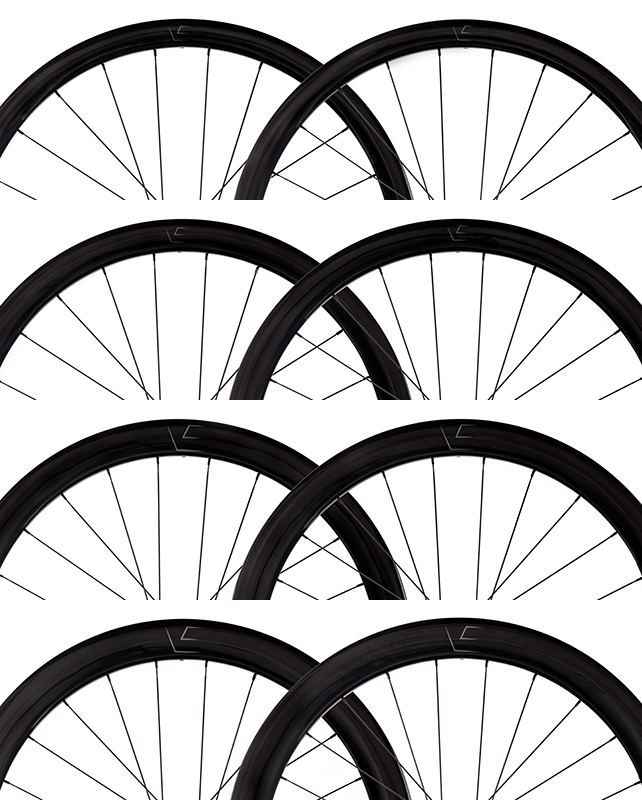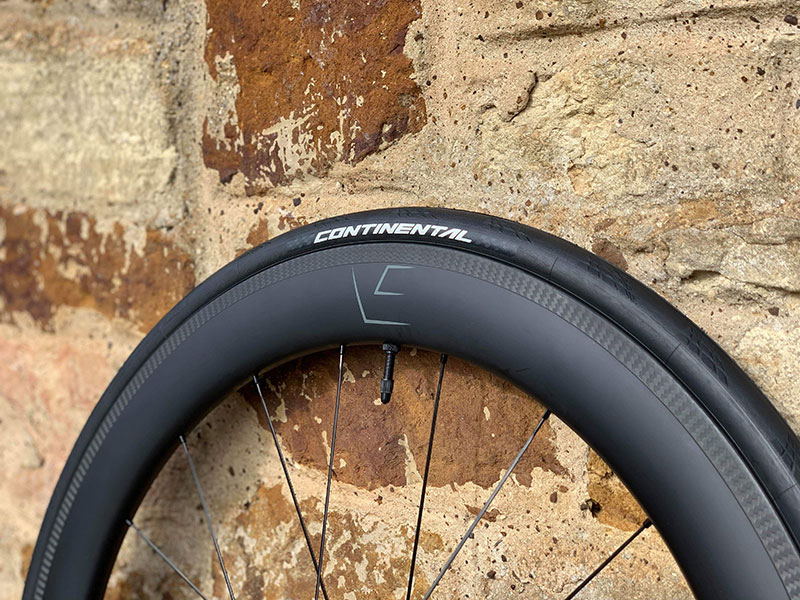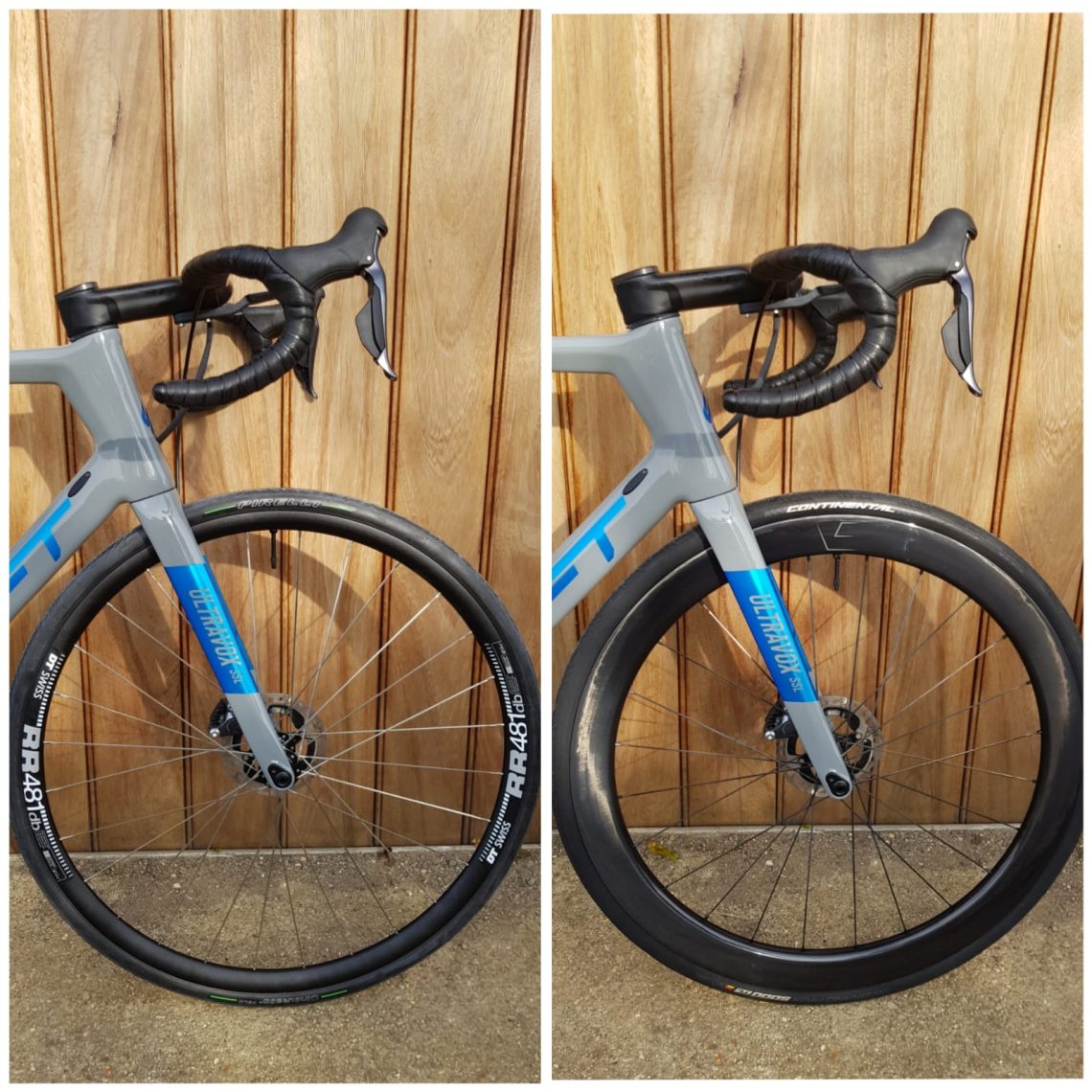What Depth of Bike Wheel Should I Buy? Choosing the right bike wheel depth can…

Hookless vs Hooked Carbon Wheels: Which is Best?
Carbon wheels are a transformative upgrade for cyclists, offering reduced weight, improved aerodynamics, and enhanced ride quality. However, a critical decision arises when choosing between hookless and hooked carbon wheels. Each design has unique characteristics, and the best choice depends on your riding style, tire preferences, and priorities. Here’s a detailed comparison to help you make an informed decision.
What Are Hooked and Hookless Wheels?
Hooked Wheels Hooked rims, also known as clincher rims, feature a small inward-facing lip that secures the tire bead. This design has been the standard for decades and is compatible with a wide range of tires, including both tubeless and traditional clincher setups.
Hookless Wheels Hookless rims have a smooth, straight sidewall without the lip. This newer design is tailored primarily for tubeless setups and offers manufacturing simplicity and a broader internal rim width.
Advantages of Hooked Wheels
1. Broad Compatibility Hooked rims are compatible with a wide variety of tyre brands and types, including high-pressure road tires. They accommodate both tubeless and clincher setups, making them versatile for different riding styles, in our experience all tyre brands offer tyres that are compatible with hooked rims.
2. High-Pressure Performance If you prefer running high-pressure road tires, hooked rims are your best bet. The bead hook provides a secure hold, reducing the risk of blowouts.
3. Proven Design Hooked rims have a long history of reliability, making them a trusted choice for riders who prioritize safety and versatility, also those unsure about tubeless tyres and set ups may prefer the simplicity of a clincher set up.
4. Tubeless or Tubes hooked rims allow for the choice of whether to run inner tubes or make the swap over to tubeless, we are massive advocates for tubeless and the benefits of running a tubeless set up.
Advantages of Hookless Wheels
1. Enhanced Aerodynamics and Width Hookless rims typically have a wider internal width, which allows the tire to adopt a more aerodynamic and optimal shape. This improves rolling efficiency and comfort.
2. Strength and Durability The simplified sidewall of hookless rims eliminates the hook’s stress concentration, often resulting in a stronger and more durable wheel structure.
3. Ease of Manufacturing Hookless designs are simpler to produce, which can translate to lower costs for high-quality carbon wheels.
4. Low tyre pressures It is no secret that it has been proven that lower tyre pressures decrease rolling resistance and provide more grip and comfort – a no brainer when looking for those extra gains, however these improvements are most noticeable when riding offroad.
Key Considerations When Choosing Between Hooked and Hookless
1. Tire Compatibility
o Hooked rims work with nearly all tires, including those requiring high pressures.
o Hookless rims are generally limited to tubeless-ready tires that adhere to specific standards. Always check compatibility before purchasing, most brands are now supplying hookless compatible rims certainly your big player such as Continental, Schwalbe and Pirelli.
2. Pressure Limitations
o Hookless rims often have a maximum tire pressure limit typically around 70 psi to ensure safety, which again is no issue with offroad riding where a lot of riders would potentially be running as low as 20psi.
o Hooked rims can handle higher pressures, which is ideal for certain racing and road applications, however this is really only in the most perfect of road conditions.
3. Riding Style
o If you’re a gravel, endurance, or off-road cyclist, hookless wheels’ wider internal width and lower pressure suitability offer better comfort and traction.
o For road racers and time trialists there is becoming a changing of the guard with this, there is more recently a lot of rolling resistance data coming out to prove that the lower pressures from a tubeless set up are faster.
4. Weight Hookless rims are often lighter due to their streamlined construction, which can appeal to weight-conscious riders, in a lot of scenarios a tubeless set up will also be lighter than a clincher tyre combined with an inner tube.
Which Is Best for You?
The decision between hookless and hooked carbon wheels depends on your specific needs:
• Choose Hooked Wheels if you value tire flexibility, high-pressure capabilities, and also value the choice of running Tubeless or the simplicity that a clincher tyre brings or run a narrower tyre set up 25-32mm.
• Choose Hookless Wheels if you’re focused on tubeless performance, weight savings, and wider tires for off-road or gravel adventures.
Our conclusion
Both hookless and hooked carbon wheels have distinct advantages, and neither is universally superior. Understanding your riding style and discipline, tire preferences, and compatibility needs will guide you to the right choice. We believe that if you are after the ultimate in off road performance then hookless rims like we use on our gravel and mountain bike wheels is the way to go. Where as we opt for a hooked rim on our road wheel offerings to give you the choice in tyre set up. We believe that our road hooked rims set up tubeless give you the ultimate in speed and performance on the road.



